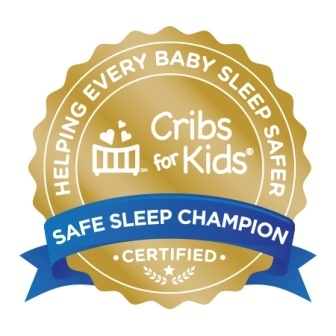Infant Safe Sleep
Guidelines for Infant Sleep Safety
Why safe sleep matters
According to the CDC (Center for Disease Control), there are around 3,500 sleep related deaths among babies in the United States each year. Safe sleep practices are designed to reduce the chances of Sudden Infant Death Syndrome (SIDS), accidental suffocation, and other deaths related to unsafe sleep practices. Sudden unexpected infant death (SUID, formerly known as SIDS) is a term used to describe the sudden and unforeseen death of a baby younger than 1 year old when the cause is not specifically known. These deaths often happen while the baby is sleeping, and investigation often reveals that the baby was not able to breathe properly in their crib or other sleep environment.
Thanks to safe sleep practices, sleep related deaths like SIDS are on the decline, however, it is important that all health providers and parents know how to create a safe sleep environment. At Clinch Valley, we are dedicated to the health and safety of our youngest patients. The National Safe Sleep Hospital Certification Program recognizes hospitals that have committed to making babies as safe as possible in their sleep environments and eliminating as many sleep-related deaths as possible.
- Always place a baby on his or her back to sleep, for naps and at night, to reduce the risk of SIDS.
- Use a firm sleep surface, covered by a fitted sheet; a crib, bassinet, portable crib or play yard that conforms to the safety standards of the Consumer Product Safety Commission (CPSC) is recommended.
- Your baby should not sleep in an adult bed, on a couch or on a chair alone, with you, or with anyone else.
- Keep your baby’s sleep area in the same room where you sleep (for the infants first year). Room sharing not bed sharing. Always place the baby in a safety-approved crib, bassinet, portable crib for sleep.
- Sitting devices like bouncy seats, swings, infant carriers or strollers should not be used for routine sleep.
- Keep soft objects such as pillows and blankets, toys and bumpers out of your baby’s sleep area.
- Wedges and positioners should not be used.
- Do not smoke during pregnancy or allow smoking around your baby.
- Do not let your baby get too hot during sleep.
- Breastfeed your baby.
- Give your baby a dry pacifier that is not attached to a string for naps and at night to reduce the risk of SIDS after breastfeeding is established.
- Supervised Skin to Skin is recommended to all mothers and infants immediately following birth regardless of feeding or delivery, (as soon as mother is medically stable, awake and able to respond to her newborn) and to continue for at least an hour. Once mother starts to get sleepy, return baby to bassinet.
- Follow health care provider guidance on your baby’s vaccines and regular health checkups.
Cribs for Kids safe sleep certification
Founded in 1998 by Judith A. Bannon, Cribs for Kids is a national infant safe-sleep education program that helps to reduce the risk of injury and death of infants due to accidental suffocation, asphyxia, or undetermined causes in unsafe sleeping environments. Visit cribsforkids.org for more information.
Cribs for Kids also certifies hospitals that have made a commitment to safe sleep practices and educating the public about safe sleep. Visit Cribs for Kids Hospital Certification for more information.
The ABC’s of Safe Sleep
Too many babies die because of unsafe sleep. Follow the ABC’s of Safe Sleep to keep your baby safe!
A – ALONE: Baby sleeps without other people, toys, pillows, and blankets.
B – BACK: Baby sleeps on his or her back.
C – CRIB: Baby sleeps only in a crib, bassinet, or playpen.
S – SMOKE-FREE: Don’t smoke anywhere near your baby’s sleep space.

